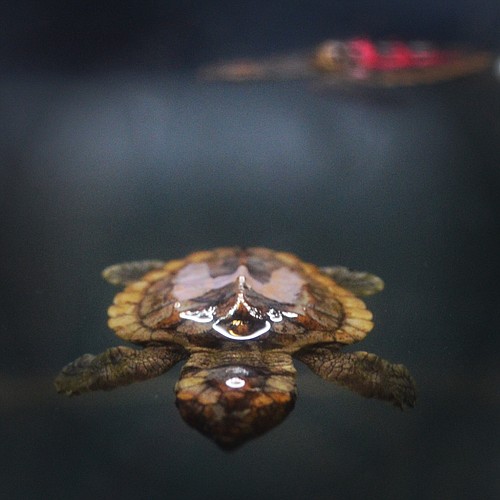- April 26, 2024
-
-
Loading

Loading

It’s the time of nesting season when baby turtles are finally hatching and heading to sea. This year, however, many of these turtles are washing back to shore and fighting for their lives.
“What has been happening is what we call washbacks,” Holly West, Mote Marine Laboratory Sea Turtle Care Coordinator, said. “They swim out and don’t make it far enough and wash back on the beach during storms or high winds and waves.”
Although it does happen each year, this season’s hatchlings are washing back in unusually high numbers. Each time a turtle is found, it is sent to Mote.
During the last turtle nesting season, Mote took care of 2,600 hatchlings in its hospital. This season has seen record numbers. More than 1,000 hatchlings were at Mote this July, and on Aug. 8 alone, 150 were brought to Mote.
Many of the rescued hatchlings are found from being disoriented or have been excavated from the nests. Those otherwise healthy hatchlings gain their strength back at Mote and are released within one to three days. The washbacks, however, usually need more attention, and Mote has seen more than 400 hatchlings in its critical care.
To distinguish the turtles in critical care, scientists paint letters on the shells with nail polish. It is in its 17th round of the alphabet, and scientists ran out of nail polish colors.
The high number of turtle washbacks correlates with the stormy weather the area has seen, but the exact cause of the washbacks is not known.
“We have storms all the time, every season, but these ones did coincide with the peak hatching period,” West said. “We are putting a lot more out there, and there’s a chance for more washbacks. Storms may and probably do have an influence, but we can’t say for sure.”
Since the storms subsided, just one or two hatchlings are brought to Mote every other day.
When a turtle hatches barring problems, it heads to the ocean. As soon as it hits the water, it swims for three days straight out to the weed line, where it has food and is covered from predators. Those first days, it receives nutrition from its yolk. When it washes back onto shore, its yolk is depleted, and it is not receiving proper nutrition.
“Those who don’t make it are very malnourished and starving,” West said. “We get a lot of rough looking ones.”
Although the washback problem is unusual for the Gulf Coast, it is common on Florida’s Atlantic side.
“They are much more equipped to handle this,” said Cyndi Seamon, Longboat Key Turtle Watch vice president. “We just do what we can do. This is really weird for us, but for the other side of Florida, it’s not. I don’t know that we’ve ever experienced something like this.”
Of the 400 hatchlings that have been through critical care at Mote, about 30 remain in the hospital. To be released back in the wild, a hatchling must be completely healed of its injury and able to dive to the bottom of the tank and eat independently.
“We’re getting a good chunk of them back out,” West said. “We try to put as many back into the wild as possible. There’s very little hope for washbacks if they’re not brought here. Every little one counts.”
As of Aug. 8, there were 2,362 loggerhead, 36 green and two Kemp’s ridley sea turtle nests this season spanning from Venice up to Longboat Key beaches. Each nest has about 100 eggs. Despite the high number of eggs, only one in 1,000 hatchlings will make it to adulthood. Thanks to Mote, more hatchlings are given the chance to live.
“Some people were reporting a bird had a turtle in its mouth,” Seamon said. “In the daytime, they are getting eaten by birds and crabs or they’re starving. If they weren’t found, they had no chance. They’re getting this second chance at life.”